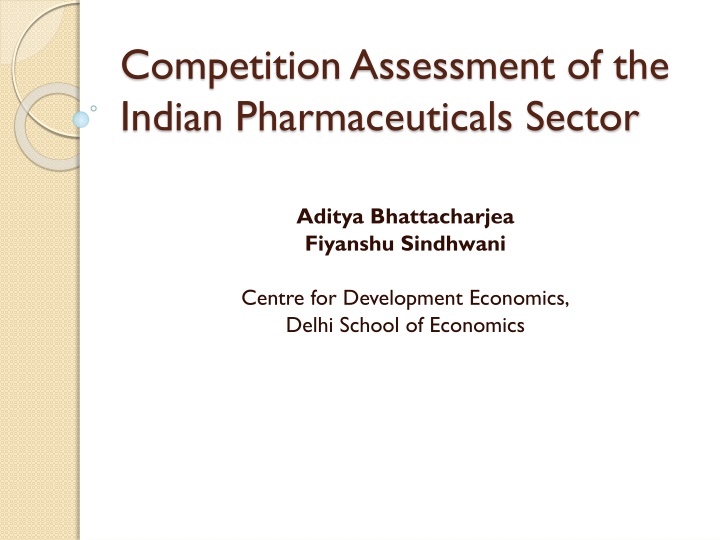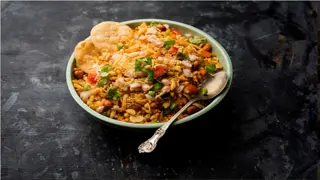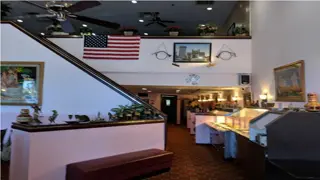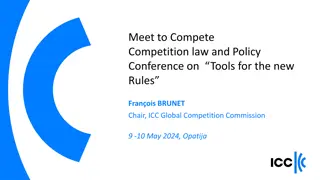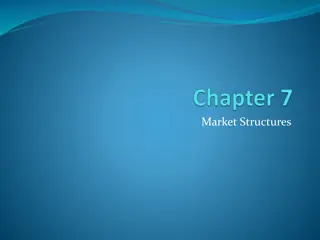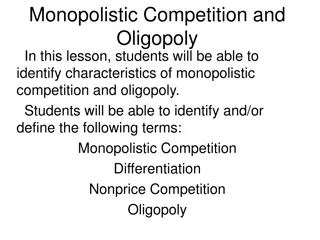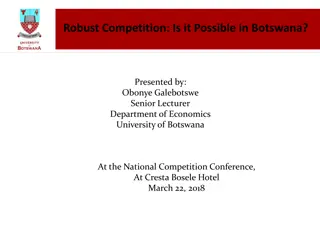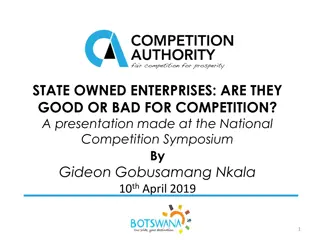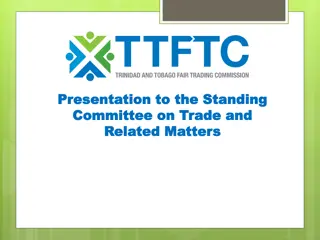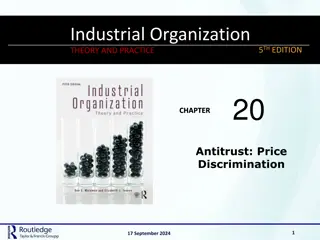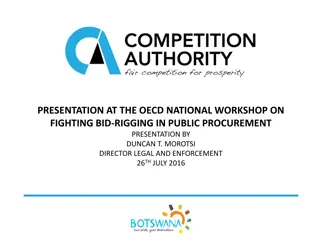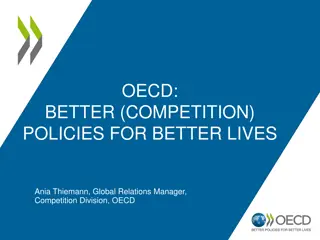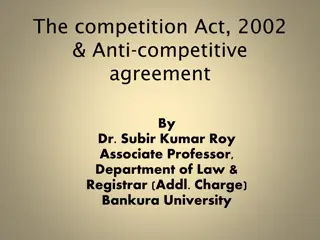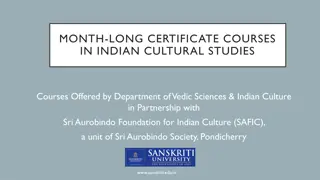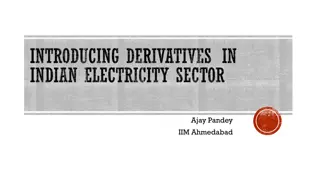Competition Assessment of the Indian Pharmaceuticals Sector
Delve into the groundbreaking work at Berkeley's advanced light source and Center for Structural Biology, focusing on COVID-19 response, bio-SAXS/WAXS beamline development, protein research, and external funding collaborations with renowned institutions and pharmaceutical companies. Explore the latest in structural biology, drug discovery, and bioengineering.
Download Presentation

Please find below an Image/Link to download the presentation.
The content on the website is provided AS IS for your information and personal use only. It may not be sold, licensed, or shared on other websites without obtaining consent from the author.If you encounter any issues during the download, it is possible that the publisher has removed the file from their server.
You are allowed to download the files provided on this website for personal or commercial use, subject to the condition that they are used lawfully. All files are the property of their respective owners.
The content on the website is provided AS IS for your information and personal use only. It may not be sold, licensed, or shared on other websites without obtaining consent from the author.
E N D
Presentation Transcript
Competition Assessment of the Indian Pharmaceuticals Sector Aditya Bhattacharjea Fiyanshu Sindhwani Centre for Development Economics, Delhi School of Economics
Structure of the report Introduction Importance of drug availability and pricing in India Special features of the market for medicines Evolution of the policy regime Empirical analysis of market structure Competition law Drug price control Foreign direct investment takeovers TRIPS and patent protection Public production, procurement and distribution Competition assessment checklist
Evolution of policy regime 1970: Patents Act and DPCO 1973 FERA Restrictive import policy MRTP Act Progressive relaxation of all the above from 1990s
Analysis of Market Structure: Aggregate level There are over 10,000 pharma manufacturing firms in India For pharma firms in Prowess, Price-cost margin, CR4 and HHI all show decline since around 2004. Sharp decrease in entry of new firms, significant increase in exit large decrease in net entry. Possible reasons: High interest rates Inability to comply with GMP Expiry of tax concessions given in HP Aggregate import penetration has risen
Structure-conduct-performance analysis Carried out for 610 pharma firms in Prowess, 1990- 2010. Results contrary to standard SCP models: Coefficients for market share weakly significant, MS- squared insignificant weak relationship between market share and profitability Log (assets) is negative and significant larger firms have lower PCM Coefficients for contemporaneous R&D intensity and advertising intensity are negative and significant. But their lagged effect is positive results of such expenditures are realised with a lag Dummies for TRIPS periods are positive and significant
Analysis of market structure: Individual drugs However, actual competition takes place at the level of therapeutic segments or individual drugs. Calculations for 9 specific dosages of individual drugs show much higher concentration, increasing between 2005 and 2010 for some of them (CR4 > 90% for 500mg calcium tablets and 40mg insulin injections). Wide variation in prices of different brands of the same drug (e.g. Diclofenac); coexistance of high prices with high market shares. Need to look at firms practices. Branding of generics allows differentiation, marketing with high distributor margins and/or influencing doctors prescription behaviour. But branding also serves as a signal of quality in the absence of effective quality control under the Drugs and Cosmetics Act
Competition law Ineffectiveness of MRTP Act: limited resources, only cease and desist orders Review of all pharma-related cases decided till now under Competition Act Five cases of regional chemists & druggists associations following AIOCD guidelines in forcing manufacturers to limit number of stockists in each territory obtain NOC from association for appointing new stockists restrict bidders for government procurement fix trade margins Products of manufacturers who fail to comply were boycotted in some cases. In some cases, associations also prevented chemists from giving discounts to consumers These practices have been carried out nationwide for over 30 years Fine based on association s turnover grossly inadequate Fixation of trade margins by NPPA: RPM by govt mandate?
Merger cases 8 pharma cases decided since June 2011 when relevant sections of the Competition Act were brought into force; all were approved. The ultimate control over the parties in the combination remains the same before and after the combination (intra-group reorganization). Companies not engaged in similar businesses and no vertical integration (conglomerate merger). Absence of one of the parties in India in the business of the other party Companies mainly export oriented Significant presence of other players (no AAEC) CCI modified non-compete agreement in 2 deals But we have identified several mergers that were not screened because the combined assets or turnovers of the firms were below the thresholds specified in the Act, or the assets/turnover of the target was below the threshold specified by the 2011 notification. Case for reviewing thresholds for this sector? 2012 Competition Act (Amendment) Bill.
Trade Policy Coverage of import licensing brought down from 1980s, tariffs from 1990s for most drugs, now 10% basic duty + 16% CVD + special CVD 4% + educational cess 3% SPSS restrictions, incl registration and licensing of foreign manufacturing premises in some cases. Antidumping: India now the world s biggest (ab)user; non-market economy treatment of China (e.g. AD duty on metronidazole since 2000, paracetamol since 2002).
Drug Price Control Review of debate over transition from cost-based pricing of 74 drugs under DPCO 1995 to market-based formula (average price of all brands with >1% market share) for all 348 NLEM drugs in NPPP-2012. Weaknesses in arguments on both sides Price controls are usually imposed for natural monopolies where the number of products and producers is few and competition infeasible. Possibility that controlled prices can be used as focal prices for facilitating oligopolistic coordination parallel with cement case? Even the controlled prices can be much higher than the competitive price discovered by tenders for bulk government procurement for schemes like TNMSC and Jan Aushudhi, even after allowing for additional trade margins. Example: Diclofenac In 2013, the new DPCO was passed which seems to have reduced the prices of drugs covered in the NLEM. However, there are problems with this also as: Many wholesalers and distributors found that their margins were eroded and stopped distributing some of these drugs Some firms have started to introduce new variants (such as controlled-release ) which they claim as new drugs which are not subject to the price cap.
Foreign Direct Investment and Takeovers Review of Maira Committee Report Screening by CCI (with extra expertise on health issues) preferable to FIPB. Case for reducing merger review thresholds Competition (Amendment) Bill 2012. Review of debate on role of MNCs Market share of foreign firms has not gone up post-TRIPS But they are increasingly supplying the market through imports, esp of high priced patented drugs and also generics Effects of takeover on R&D inconclusive, but MNCs overall have much lower R&D intensity Too early to detect impact of 2008-10 foreign takeovers?
IPR Issues Impact of TRIPS Some evidence that growth rate of R&D expenditure and the number of process and product patents filed by leading Indian firms declined after 2005. R&D for drugs to treat diseases of greatest public health importance (malaria, TB) neglected in favour of lifestyle diseases by both Indian and foreign firms. Encouraging signs of India using TRIPS flexibilities: Grant of compulsory licenses for Bayer s Nexavar. 3 more cancer drugs being considered. Use of 3(d) to deny evergreening patent for minor improvements in Novartis s Glivec Pre-grant opposition refusal of patent to Astra Zeneca s Iressa Post-grant revocation of patent for Roche s Pegasys and Pfizer s Sutent
Public production and procurement In 2008, Health Ministry closed down 3 leading PSUs on grounds of not complying with GMPs. Reopened in 2010 but production still far below earlier levels govt has to procure vaccines from private producers at much higher prices. Government procurement rules to ensure GMPs have been struck down by High Courts as excluding competition without adequate justification. Need to provide assistance to smaller units to comply with GMP and to enforce quality standards under Drugs and Cosmetics Act. This would increase competition for bidding and also weaken industry s argument against debranding on grounds of quality assurance.
Competition Assessment Checklist and Prescriptions P1 (Fostering Competitive Neutrality) : Closure of 3 PSU s on grounds of GMP Reverse Discrimination. Prescription: Revival package with management overhaul, but subject to competitive neutrality principles. P2 (Procedures should be rule bound, transparent, fair and non-discriminatory) : GMP eligibility conditions rejected by High Courts in drug procurement Apply GMPs on nondiscriminatory basis, but provide concessional credit to MSMEs. Antidumping duties on imports: support tightening of AD rules in WTO; take objections by user industries more seriously. Tariff preferences extended to (some) SAFTA members: Probably not serious enough to justify changes Acquisitions of Indian firms by the FIPB route: Reroute through CCI with lower notification thresholds and inputs of public health expertise. P3 (Third party access to essential facilities on reasonable fair terms will ensure effective competition and therefore, should be provided in law): Use TRIPS flexibilities more aggressively and resist pressures to impose TRIPS-plus conditionalities
Competition Assessment Checklist P4 (Ensure free and fair market process): Move towards debranding after ensuring alternative quality control mechanisms; expose pharma companies unethical attempts to influence prescribing behaviour P5 (Effective Control of anticompetitive conduct through competition rules) : Anticompetitive practices by chemists associations Exclusive Dealing Arrangements RPM More suo moto inquiries; impose penalties based on chemists turnover, not associations ; avoid fixation of trade margins in price control P6 (Notification and public justification of deviations from principles of competition policy) Antidumping and SPSS Review of acquisition proposals through FIPB route GMP enforcement and exemptions Give clear public justification for such deviations from competition principles
THANK YOU! Comments welcome: aditya@econdse.org
Analysis of Market Structure CR4 30 25 20 Prowess Prowess + IDMA 15 Prowess Domestic Sales + Trade Prowess Domestic Sales + IDMA + Trade 10 5 0 2000 1990 1991 1992 1993 1994 1995 1996 1997 1998 1999 2001 2002 2003 2004 2005 2006 2007 2008 2009 2010
Analysis of Market Structure 450000 400000 350000 300000 Rs Million 250000 Imports 200000 Exports 150000 100000 50000 0 1996 1997 1998 1999 2000 2001 2002 2003 2004 2005 2006 2007 2008 2009 2010 2011 Source: Created by the authors using http://commerce.nic.in/eidb/default.asp; HS Code: 30 Import Penetration Ratio 0.09 0.08 0.07 0.06 0.05 0.04 0.03 0.02 0.01 0 1996 1997 Source: Created by the authors using Ministry of Commerce and Prowess Database 1998 1999 2000 2001 2002 2003 2004 2005 2006 2007 2008 2009 2010 Years
Analysis of Market Structure No. of Drugs/Packs No. of Formulators CR4_Firm HHI_Firm 51 53 Therapeutic Category Anti-infectives Cardiac Molecule Cefixime Oral Sol. 200 mg Atorvastatin 10 mg Rabeprazole + Domeperidone 20 mg Cough Prep. Ethicals 100 ml Diclofenac Combination OS 50 mg 55 61 66.60 47.68 1557.03 846.43 25 Gastro Intestinal Respiratory Pain / Analgesics Vitamins / Minerals / Nutrients Anti Diabetic Gynaec. Neuro / CNS Year: 2005 23 212 136 57.70 41.32 31.50 1370.67 641.79 430.52 618 231 208 Calcium Oral Solids 250 IU Human Insulins 40 IU Conv.Iron Liquid 200 ml Alprazolam OS 0.5 mg 134 66.35 97.96 57.89 76.31 1471.19 4566.20 1122.91 1697.31 50 126 85 8 90 69 No. of Drugs/Packs No. of Formulators CR4_Firm HHI_Firm 76 58 Therapeutic Category Anti-infectives Cardiac Molecule Cefixime Oral Sol. 200 mg Atorvastatin 10 mg Rabeprazole + Domeperidone 20 mg Cough Prep. Ethicals 100 ml Diclofenac Combination OS 50 mg 49.10 41.59 136 87 854.22 685.27 Gastro Intestinal Respiratory Pain / Analgesics Vitamins / Minerals / Nutrients Anti Diabetic Gynaec. Neuro / CNS Year: 2010 91 582 145 74 205 96 33.23 34.12 55.32 497.40 449.77 963.04 Calcium Oral Solids 250 IU Human Insulins 40 IU Conv.Iron Liquid 200 ml Alprazolam OS 0.5 mg 28 36 148 78 20 10 96 51 95.34 93.35 72.97 71.76 7450.90 4771.17 2492.88 1642.64
Drug Price Control Diclofenac Combination 16 14 12 Market Share 10 Price-MS Scatter NPPA Regulated Price TNMSC TNMSC MARK UP Jan Aushadhi Price 8 6 4 2 0 0 0.5 1 1.5 2 2.5 3 3.5 4 4.5 5 5.5 6 6.5 7 7.5 8 8.5 9 MRP/Tab
